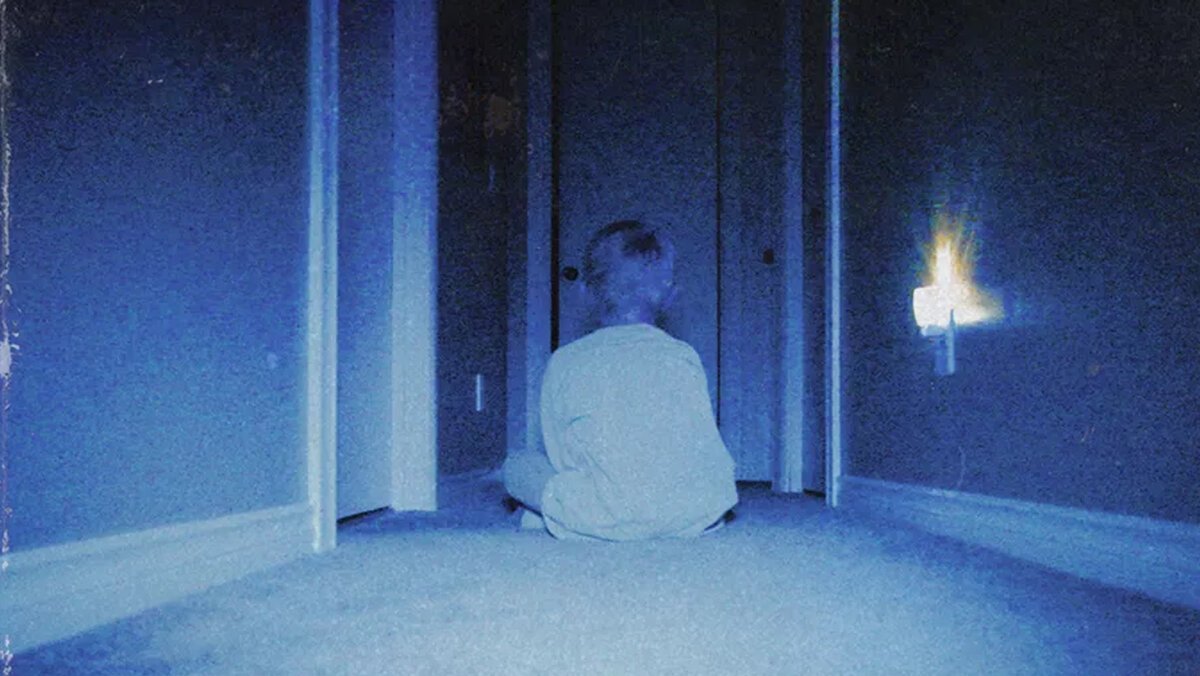Review: Skinamarink (2022)
You know the fable about the frog and the boiling water? Well, that’s how Skinamarink works. Its avant-garde approach lulls you to sleep so that you wake up in a nightmare.
The experimental debut feature of Canadian filmmaker Kyle Edward Ball is profoundly unsettling and so strange that as many viewers will hate it as love it. But it rewards your patience. Like so many great horror movies, and particularly found-footage horror movies, with which it shares many stylistic hallmarks, it relies on an absolute suspension of disbelief, which erases the boundaries between what you’re seeing on screen and what you’re feeling. The result is a dissociative nightmare. You feel trapped inside the film and therefore prey to its unbearable tension and nightmarish possibilities, just as the children are prey to the unknown presence haunting their house at night.
As far as a story goes, Skinamarink follows two kids, four-year-old Kevin (Lucas Paul) and six-year-old Kaylee (Dali Rose Tetreault), who wake up one night to realize their dad (Ross Paul) isn’t around. The doors have disappeared. They watch old cartoons on TV to pass the night, but it never becomes morning. Mom (Jaime Hill) isn’t around anymore. They don’t know why. They don’t know what’s happening. Neither do we. The title and the concept together suggest the ways that the loss of a parent is a living nightmare for a child. The radical formal approach tries to replicate that overwhelming confusion and fear a child of four might experience.
Ball, who’s expanding on his 2020 proof-of-concept short film, Heck, doesn’t give us any exposition. There is no set-up, no character development, no “scenes” of the kind you’d read on a page. The approach is entirely avant-garde, more akin to Michael Snow than Wes Craven. Or to put it in horror movie terms, it’s like Oren Peli’s Paranormal Activity with all the daytime scenes stripped out. Perhaps the closest analogue is David Lynch’s “Episode 8” of Twin Peaks: The Return, where Lynch strips away conventional storytelling to touch at the core of evil in the world. But even that isn’t entirely accurate. Skinamarink is too much of an outlier for comparisons to do it credit. It’s an experience all its own, one that you’ll either surrender to or retreat from. Whether you think it’s great or a bore will depend on whether you do the former or the latter.
Ball doesn’t give an inch in his stylistic approach. The grainy digital footage has no conventional framing, no shots of characters’ faces, and no shot reverse-shots. There is no “coverage” here in the traditional sense. Rather, we get insert shots of the ceiling or toys on the floor, geometrically framed and emphasizing slivers of light creating further shapes on screen. There’s an overwhelming use of shadow, which combines with the noisy grain of the footage to play tricks on your eyes. When you stare at an open door wreathed in shadow—which happens often here—you wonder whether you spot a figure just beyond the frame. Your mind plays tricks on you. Did you see it? Was there anything even there? It doesn’t matter, because whether you saw it or you merely think you saw it, the tension ratchets up and you’re prey to the film’s suffocating atmosphere. You’re scared all the same.
The sound design is even more unsettling than the visual approach. Characters speak in muddled whispers. Subtitles often let us know what they’re saying. The only music comes from the old Max Fleischer cartoons playing on the tube TV. The cartoons add an ironic undercurrent to the whole thing, but the constant presence of 1930s jangly jiving tunes makes the home sound like it’s the Gold Room in Stanley Kubrick’s The Shining; there’s something truly uncanny about listening to those silly ol’ tunes in such a creepy setting.
Eventually, a guttural, throaty whisper starts to bid commands to the children. Is this voice one of the parents? Something more sinister? Is there even a difference in this situation? Ball knows he is creating unbearable tension here, with first-person shots of children walking into basements haphazardly wielding flashlights as spotlights into the empty space. Other scenes have them bid to look under the bed and stare into the darkness until something stares back. Tension always has to break and here, Ball breaks it in the most jarring fashion possible, using more jump noises than jump scares, auditory bursts of screeching feedback that jolts you as much as any scary face. But you get those too, in a way, dissociated, defamiliarized, so indistinct yet so human that you mask your own fears onto its empty features, terrified by the implications and the uncanny dreamscape you’re witnessing.
Skinamarink will either work on you or it won’t. I doubt there’s any in-between. If you’re looking for a conventional horror picture, you’re wandering around the wrong house. If you refuse to surrender to its slow cinema rhythms in the first half, the second half won’t hold its necessary power. It’s a film of gradual dread that becomes all-consuming, like white noise or the static feedback of a tube TV. So you have to meet it halfway. But if you do, it’ll shred your nerves like few films of the past two decades. Like the song of the title, good luck getting it out of your head.
9 out of 10
Skinamarink (2022, Canada)
Directed by Kyle Edward Ball; written by Kyle Edward Ball, based on his short film Heck; starring Lucas Paul, Dali Rose Tetreault, Ross Paul, Jaime Hill.



Yorgos Lanthimos’s Bugonia succeeds largely due to its central performances.